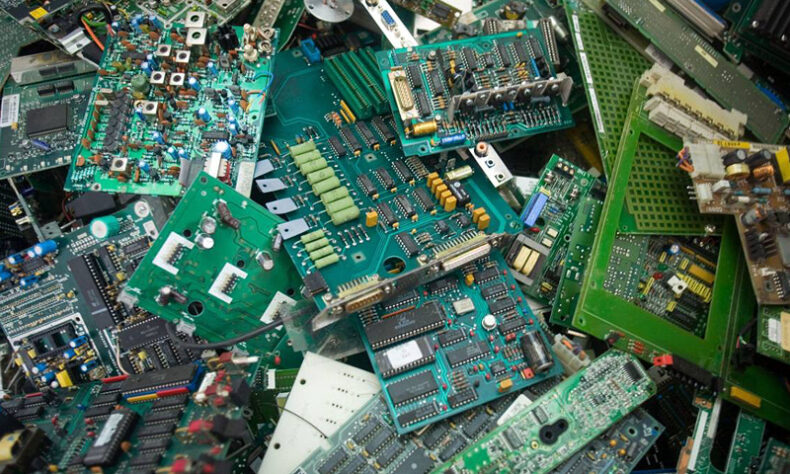
What do you mean by embedded computer?
An embedded computer is a microprocessor that has been programmed intelligently to carry out certain kinds of functions. You will see that the embedded computers comprise both software and hardware. You can trace their importance in some of the daily usable items, such as automobiles, cameras, and cell phones.
- Notable advantages of the embedded computer
The configuration of the desktop computer is different from that of the embedded computer. It is a fact that embedded computers are quite advantageous for sectors like agriculture, industry, and the military.
- Extremely trustworthy
Then embedded computers are quite trustworthy, especially when you think of deploying them to carry out secretive missions in the military. They are so designed to withstand any type of request and can stand still against any environmental conditions that incorporate uneven terrain and extreme temperatures ranging from 30 to 70 degrees. The best thing about the embedded computer is that it can resist humidity and dust as well.
- Power resistance
You should know that an embedded computer is programmed to work around the clock, which is why it comes with light and robust software dedicated to working for such long hours. Thus, this minimizes the need for immense processing power. They do not rely on any kind of machine that tends to consume more power.
- Compact size
A look at its design will give the hint that they use high-end cooling systems and enclosed architecture that gives them that compact look. Engineers used the principle of thermodynamics to let the embedded computers cool down rather than using fans.
Examples of embedded computers
Embedded computers are used in different fields, such as space exploration, digital signage, and self-automation. You can get embedded computers in different shapes and types because of their array of applicability. For instance, you can have them in PC panels, small-sized PCs, industrial PC boxes, IoT gateways, and industrial rackmount servers.
Machines used in our daily lives, such as calculators, elevators, printers, and vending machines, very much rely on embedded computers.
Aspects of embedded computers
I learned that embedded computers are quite noticeable for their contribution in different fields. Still, there are certain aspects that you should pay attention to to understand in a better way.
- Indirect cooling method
Remember that no mechanical fans are installed to let the embedded computers cool down. Rather, they use heat sinks and pipes. Embedded computers allow the acrid heat to dissipate into the atmosphere using low thermal design power. No doubt this quality makes an embedded computer a congenial one for areas with uncontrollable temperatures.
- Robust design
The robust architecture of embedded computers shields them from vibration and shock and allows them to comfortably resist high voltage conditions. These significant “aspects ensure that the embedded computers do not fail to offer enduring results. They also offer stability in the form of wide voltage protection in places where a sudden rise in voltage is an issue.
- Reliable and limited maintenance
As said earlier, embedded computers do not depend on any kind of cables or fans, which is why they are reliable to use. Moreover, you don’t have to worry about maintenance as well. Additionally, the chance of having damaged components is also quite low. The embedded computers can perform quite well in unfavorable conditions. Most importantly, it outnumbers many when it comes to working 24 hours a day.
- Self dedicated
This reduces the dependency on the additional hardware. For instance, you can consider the Win 10 IoT version of Windows, which particularly focuses on working with IoT applications and embedded computers. It offers constant support to the developer while at the same time keeping them informed.
- Less consumption of power
The processors used in embedded computers are completely efficient. Precisely, it takes care that the components located internally don’t emit much heat. It also discards the use of moving components like fans. That, in general, reduces power consumption and expenditure.
- Knowledge about the internet of things
One can use artificial intelligence, edge computing, and machine learning, along with embedded computers, to change their products. In support of the processing ability of the embedded computers, the IoT does garner all the sensitive information. Note that later, this information is scrutinized to get the desired output. It is quite significant, as it allows companies to enhance their level of productivity and improvise their way of doing business.
Different types of embedded computers
- The rugged industrial box PC
This type of embedded computer is robustly designed. Also fortified with a case so that they remain safe in unfavorable temperature conditions. They are mostly crafted from anodized aluminum, which makes them enduring and sturdy. It is designed to stay resistant to corrosion, humidity, and dust. Therefore, you can safely use it in an external environment without adding any additional protective layers. Certainly, it is quite suitable for remote applications.
- The panel PC
The panel A PC comes with a consolidated keyboard, display monitor, and one touch screen. The PC can be substituted or adjusted with any I/O module complying with the industry norm. The embedded computers have an easy-to-interact interface, which allows humans to interact easily. To protect from shock or other toxic materials, the touch screen needs to be handled with gloves. They are mostly recommended for places like packaging industries, the robotic arms industry, and processing machine places.
- The mini PC
These embedded computers are small in terms of size. You can get this at a pocket-friendly price. To accomplish intelligent work, it is better to rely on mini-PCs. The best part is that they can be confined to small-sized areas. Security networks and VPN routers use the mini PC as it provides security. At the same time, they work quite seamlessly.
- The industrial rackmount sever
The embedded computers of this particular type are designed to be installed on the rack with the other servers piled up on top. It comes with gravity-duty memory and a CPU designed to work steadfastly in acrid environmental conditions. It can stay tolerant to varied temperature conditions ranging from 40 to 70 degrees.
- The vehicle’s computer
Vehicle-embedded computers are the ones that can be set up in vehicles. The fanless design makes it a preferable choice. They provide users with remote communication. It has mobile features that make it distinguished. You can trace their applicability to responsive vehicles like ambulances, fire brigades, and police vans.
- The IoT gateway
The IoT gateway is an extension that helps to connect various communication technologies like interfaces, protocols, and connectivity. Moreover, it links the internet and IoT sensors. Additionally, it interprets protocols and gathers data from outside sources. Also preprocesses the data.
Differences between embedded computers, industrial PCs, and IoT gateways
Embedded computers are an indispensable creation. It played a key role in connecting the cloud, things, places, machines, and people. It is vital for creators to make headway on the Internet of Things.
Pros of embedded computers
- The central processing unit in the core of embedded computers is designed simply. So it becomes hassle-free to maintain. They can carry out their task dedicatedly and efficiently because of the handful of programs.
- The development cost of the embedded computer is quite pocket-friendly. It is because they are made of small-sized parts.
- This is the reason why developers build it with great attention. One of the most important things is that embedded computers are difficult to repair. Intelligent programming deters it from impacting other parts in and around it.
- No remote maintenance is required because it is programmed with an internal power supply.
- Embedded computers do not require incessant maintenance or servicing.
Cons of the embedded computers
- They are not designed to perform multiple tasks. They can only handle one task at a time.
- They are not programmed to support any kind of external device.
Applicability of the embedded computers
The popularity of embedded computers is quite far-reaching. Their mandatory presence makes electronic gadgets undeniably productive. Their application areas are quite broad, so let’s explore some of them in the low-down section.
- Surveillance and security
The best thing about the embedded computer is that it can work around the clock. This is the reason why IP cameras or inbuilt sensors in mobile devices use this. One can set this up both in public areas and at home.
- Machine sight
The embedded computers rely on high-end software and industrially accomplished hardware to scrutinize the image sensory data. Indeed, this aspect makes it a necessary addition to manufacturing co-bots and lights out.
- Digital display
The contribution of embedded computers to high-resolution displays, LED panels, and projectors is undeniably great. It helps to put the necessary information on the screen.
- Smooth connectivity
The embedded computers allow fast and safe channeling of data with the help of smooth connectivity. It even allows for transporting things from trains to flights.
- Self-interactive and service-smart kiosk machines
The interactive interface and easy-to-touch screens of embedded computers offer users a smooth experience. Manufacturers with expertise in developing kiosk machines craft machines with embedded cameras, sensors, and touch screens. To get a seamless operational experience, use embedded hardware and top-notch software.
Differences between general computers and embedded computers
If you closely analyze the contrast between general computers and embedded computers, you will see that both are quite different from each other.
General computers have motherboards that permit their parts to be replaced as required. On the other hand, embedded computers come with a printed circuit or a built-in motherboard that can neither be replaced nor expanded.
Functions of embedded computers
Obviously, in the present world, its requirements are outstanding.
- It can easily reach areas where humans find it hard to penetrate. It can conveniently work in arid climatic conditions.
- It can work around the clock without any maintenance.
- As embedded computers are placed inside the machine, they help the gadgets perform smoothly.
- It performs various other tasks, like acting as a communicator among various channels. It also helps to access and store data conveniently.
- Its flexible design allows it to adjust in any place easily.






